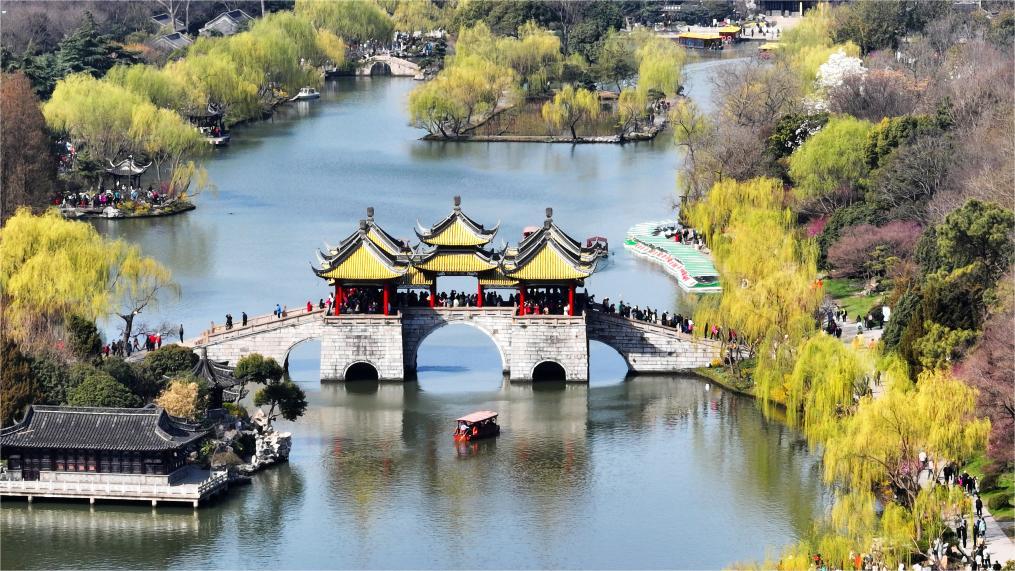China has room for further RRR cuts; debt at appropriate level: Chinese officials
Chinese monetary policy has ample space and a rich reserve of tools, with room to further cut the reserve requirement ratio (RRR), and debt is at an appropriate level, Chinese officials told an economic-themed press conference on Thursday.
These comments have instilled confidence in the outlook for the Chinese economy, which has started the year on a solid footing, and the nation has great confidence in achieving around 5 percent GDP growth this year, experts said.
There is still room for a further cut in banks' RRR. The prudent monetary policy will remain flexible, appropriate, precise and effective to lower financing costs for enterprises and consumers, Xuan Changneng, deputy governor of the People's Bank of China (PBC), the central bank, said on Thursday.
"Lower deposit costs and a shift of major economies' monetary policies offer favorable conditions for China's interest rate operations," Xuan said.
The PBC announced a 50-basis-point cut in the RRR in January, providing the market with about 1 trillion yuan ($141.05 billion) of long-term liquidity.
Chinese experts expect another RRR cut as soon as in the second quarter, which will further boost consumption and stimulate economic growth.
Remarks by policymakers signal more support and proactive measures to boost the economy and instill confidence in the market, Bian Yongzu, a senior industry research fellow and visiting scholar at Yale University, told the Global Times on Thursday.
"This could encourage businesses to invest in production and equipment upgrades, as well as stimulate consumer spending. As we approach the halfway point of the year, it is a critical time to assess economic development and consider stimulus measures if necessary," Bian said.
Tian Yun, a veteran economist based in Beijing, told the Global Times on Thursday that compared with developed countries, China has very low inflation levels. This means it has room to release liquidity by lowering the RRR without worrying about inflation.
It will be vital to spur spending, which was among the top priorities of this year's Government Work Report, Tian said.
Additionally, the issuance of ultra-long special-purpose treasury bonds for major national strategies, starting with 1 trillion yuan of such bonds this year, will offer sufficient liquidity for China to achieve its economic goal, Tian said.
A senior official with the National Development and Reform Commission (NDRC), the country's top economic planner, said at the same conference that the effect of the 1 trillion yuan in additional government bonds issued at the end of 2023 is gradually emerging and the NDRC will accelerate the deployment of ultra-long special-purpose treasury bonds, as highlighted in the Government Work Report this year.
China had allocated 1 trillion yuan of additional government bonds in three batches as of February, with over half going toward water conservancy projects such as flood control and drainage, Liu Sushe, deputy director of the NDRC, said.
Vice Finance Minister Liao Min said that a proactive fiscal policy will be in place with a mix of deficit spending, special-purpose bonds, ultra-long-term special-purpose national bonds and tax incentives to consolidate the recovery momentum and promote technology advances.
Liao also noted that China's government debt is at "an appropriate level."
"China's government debt level is moderate. It meets the need to promote the economy and provides long-term sustainability," Liao said.
China's central government has a relatively low level of debt, while local governments have a moderate overall debt level, which is generally in line with economic growth, Tian said.
Liao also noted that overseas investors have been increasing their holdings of Chinese government bonds for several consecutive months, making them one of the best-performing government bonds in Asia.
The buying indicates the growing openness of China's financial markets and the upbeat outlook of foreign investors for the Chinese economy, Bian said.
Industrial output grew 7 percent year-on-year in the first two months of this year, according to data released by the National Bureau of Statistics on Monday.
Retail sales expanded 5.5 percent from the same period last year, compared with a Reuters forecast of 5.2 percent, while fixed-asset investment was up 4.2 percent, surpassing market estimates of 3.2 percent.
"Since the beginning of the year, the fundamentals of the Chinese economy have continued to improve, with positive factors accumulating. We believe that the Chinese economy has the conditions and support to achieve the target growth rate of about 5 percent," Chinese Foreign Ministry spokesperson Lin Jian told a press conference on Thursday.
The IMF expects that China will remain a major contributor to global economic growth, while financial institutions including HSBC have said that China is on a positive development track and remains a magnet for foreign investment, Lin said.
Photos
Related Stories
- China capable of defusing debt risks, experts say
- China intensifies efforts to mitigate local debt risks
- China's finance ministry issues 16 bln yuan of treasury bonds in Hong Kong
- China still has room for RRR reductions: central bank
- Fresh moves to target local government debt
- U.S. stocks surge on passage of debt ceiling bill, strong jobs data
Copyright © 2024 People's Daily Online. All Rights Reserved.









